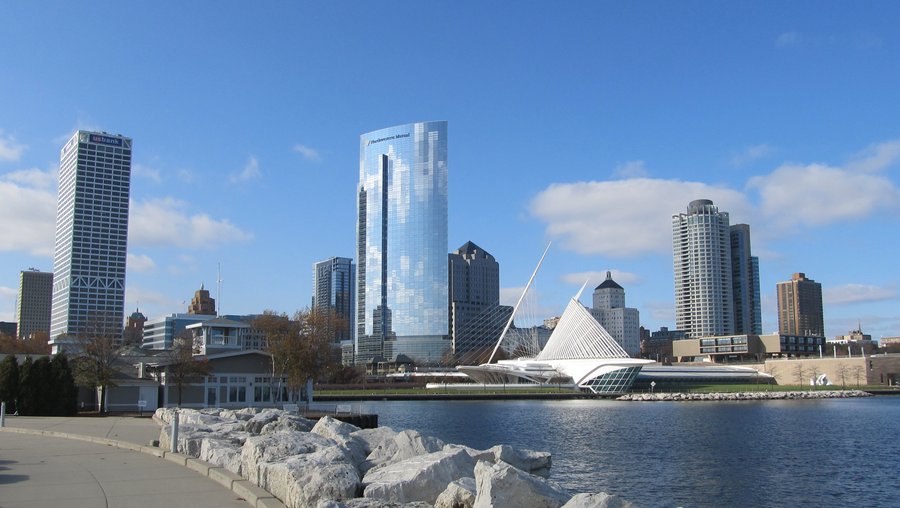Hotel occupancy and average daily room rates continue to gradually increase, though at a very slow rate, in the Milwaukee area as the travel and tourism industry remains stagnant during the Covid-19 pandemic.
According to data from STR, a hospitality research firm in Hendersonville, Tennessee, Milwaukee-area hotel occupancy for the week of April 26 to May 2 was at 23.5%. This was a 66.8% year-over-year decline. During the pandemic, occupancy hit a low of 17.3% during the week of March 22-28 and has continued to slowly increase since then.
National occupancy was 28.6%, a 58.5% year-over-year decline. Oahu Island, Hawaii, experienced the largest drop in occupancy to just 9.7%, an 88.7% year-over-year decline. This also reflected the largest decline in revenue per available room nationally to $13.93, a 93.5% decline.
Nationally, revenue per available room declined 76.8% to $21.39. In Milwaukee, revenue per available room was $16.29, a 79.4% year-over-year decline. Milwaukee saw an increase in revenue per available room from the week prior, which was $15.28.
Milwaukee's average daily room rate fell 38.1% to $69.87. It was still an improvement from last week's average of $68.73. Nationally, the average daily room rate declined 44% year-over-year to $74.72.
Boston posted the largest decline in average daily room rate, a 60.5% decline, to $90.01.
Visit Milwaukee lists 16 southeastern Wisconsin hotels as temporarily closed during the pandemic. Five of the listed hotels moved reopening dates from May 1 to June 1 as Gov. Tony Evers extended Wisconsin's Safer at Home order.
“Week-to-week comparisons showed a third consecutive increase in room demand, which provides further hope that early-April was the performance bottom,” Jan Freitag, STR’s senior vice president of lodging insights, said in a press release. “TSA checkpoint numbers, up for the second week in a row, aligned with this rise in hotel guest activity, which still remains incredibly low in the big picture. Overall, these last few weeks can be filed under the ‘less bad’ category.
Freitag also indicated that STR data showed that leisure demand grew last weekend in the states that have eased its mitigation efforts.
"As we have noted throughout the pandemic, the leisure segment will be the first to show a demand bounce back. In weeks prior, the more reasonable conclusion was that hotels were selling mostly to essential worker types," Freitag said in a press release.
Markets that saw increases in occupancy include Mobile, Alabama; Galveston, Texas; Daytona Beach, Florida; Panama City, Florida; Corpus Christi, Texas; Cedar City, Utah; and Savannah Historic District, Georgia, according to STR data.
“The first ‘real weekend’ with eased COVID-19 restrictions showed an obvious jump in hotel demand, especially in popular, warm-weather leisure spots,” Freitag said. “Whether or not this becomes a trend remains to be seen, but the fact that there were people instantly willing to head out for leisure activity and stay in hotels is a positive sign for the industry. We have maintained throughout this pandemic that the leisure segment would be the first to return, it is just a matter of when."
On the U.S. Travel Association's conference call this week, president Roger Dow confirmed that leisure travel will be among the first categories in the travel industry to return. This will consist of drives and shorter flights and only U.S. travel in the short term. Dow said business travelers will be the next category to return followed by meetings and larger conventions.
The U.S. Travel Association submitted its new "travel in the new normal guidance to assure the health and safety of travelers" document to leaders across the travel industry, the White House and state governors.
"After September 11, we had the mantra without security, there can be no travel. Covid-19 crisis has evolved this thinking to without guidance on the safeguard and health and safety of travelers, there will be no travels, no sustained reopening of our businesses," Dow said.
The goals of this travel document consist of demonstrating leadership across the travel industry to determine when it is safe to travel and under what conditions and restore public confidence in safe travel. Some of the guidance includes measures to adopt social distancing when traveling, create touchless solutions, increase sanitation measures and follow best practices in the food and beverage service.
